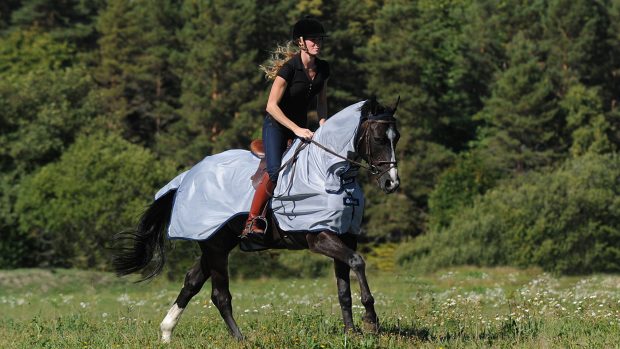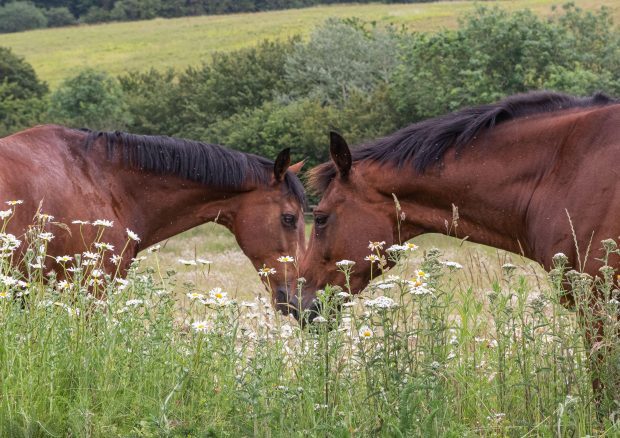Anyone who has had to deal with sweet itch knows the extent to which it can blight your horse's summer. Horse & Hound meets one owner to find out how she is managing the problem
The horse: Gambrinus, a six-year-old 16hh dressage horse
The problem: Sweet itch
Symptoms: Bred in Portugal, Gambrinus was sourced as an unbroken three-year-old by Sussex Lusitanos. Amateur dressage rider Nina Rahmatallah has owned the gelding for two years and wasn’t initially aware of sweet itch being a problem.
“He’d been broken and had been in light work for a couple of months,” Nina says.
“He was a bit rough around the edges — as they are when they’ve just come in from the field — but he hadn’t got into that obsessive rubbing cycle they get into.
“However, what I’ve realised about sweet itch is that it tends to get progressively worse over the years.”
This year, Gambrinus’ sweet itch flared up in April and Nina expects it to continue until November. “Unbelievably bendy” Gambrinus is able to scratch the top of his head with his hind hooves and can also scratch his tail with his teeth.
“You’re supposed to take away anything they can scratch on,” says Nina. “But I can’t take his teeth out or his back legs away.”
This season, he’s already rubbed half his mane off, and last summer he had bald patches on his face; around his eyes and on the top of his head, as well as a rubbed raw tail.
The Lusitano breed should be left natural, with a long flowing mane and tail. “Apart from the fact I’m upset it doesn’t look very nice and he’s rubbing away his beautiful mane, it is an ongoing source of anxiety for him and me,” says Nina.
Continued below…

Sweet itch in horses: what all horse owners need to know

23 ways to beat flies this summer
We might be excited about the prospect of
Management strategy: Nina initially went down the fly repellent route, applying Fly Away gel and feeding garlic as a food supplement, but found that garlic made the problem worse.
She then tried a number of topical solutions including Killitch Sweet Itch lotion and baby oil to keep the skin soft and moisturised, washing the areas with Hibiscrub and applying green clay.
“I’m not sure how good it is for them to be constantly putting chemicals on their bodies so I try to use Killitch — which does work — only when I’m desperate,” says Nina.
His snuggy hood has made a difference too.
“He’s had it on for six months now and it has definitely helped, although I find clumps of hair inside it, so he is trying to rub,” says Nina.
Adding Brewer’s yeast and micronised linseed to his diet has also been beneficial — “his skin is less flaky and scabby” — and Nina has just added spirulina to the mix.
Two additional treatments which she plans to try this year are Neem oil, a fly and midge repellent that also soothes the skin, encouraging the regrowth of hair; and Cavalesse, a natural food supplement containing nicotinamide (a form of water soluble vitamin B3) which suppresses the immune response (by reducing the product of histamine) and improves the skin’s barrier.
After using Cavalesse for two weeks, Nina noticed a “marked difference” in his rubbing.
“We’re still in trial-and-error mode,” says Nina.
If you are concerned about any summer ailments your horse is suffering from, please contact your vet
This article was first published in the 1 June 2017 issue of Horse & Hound magazine




